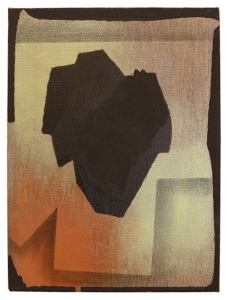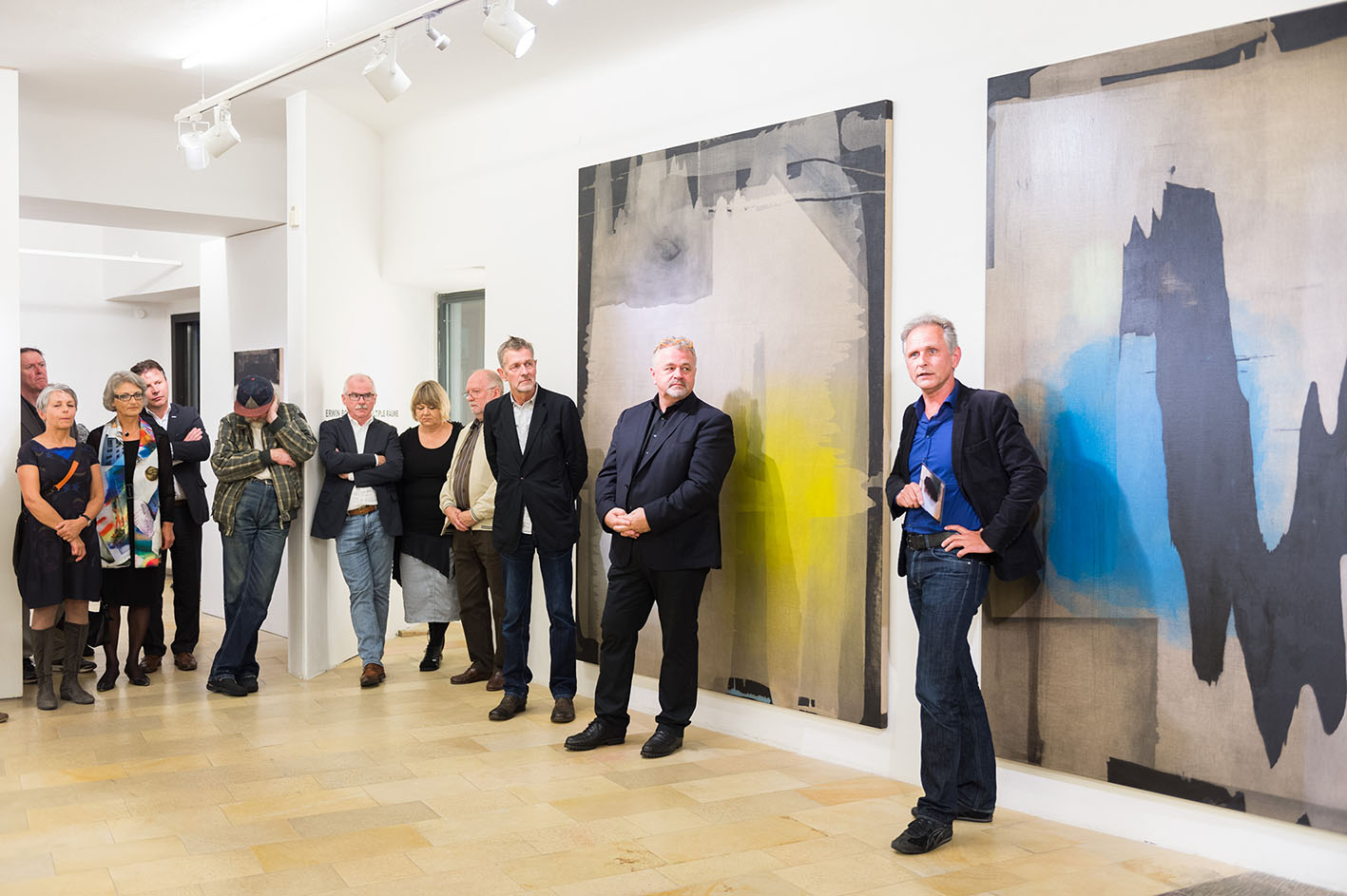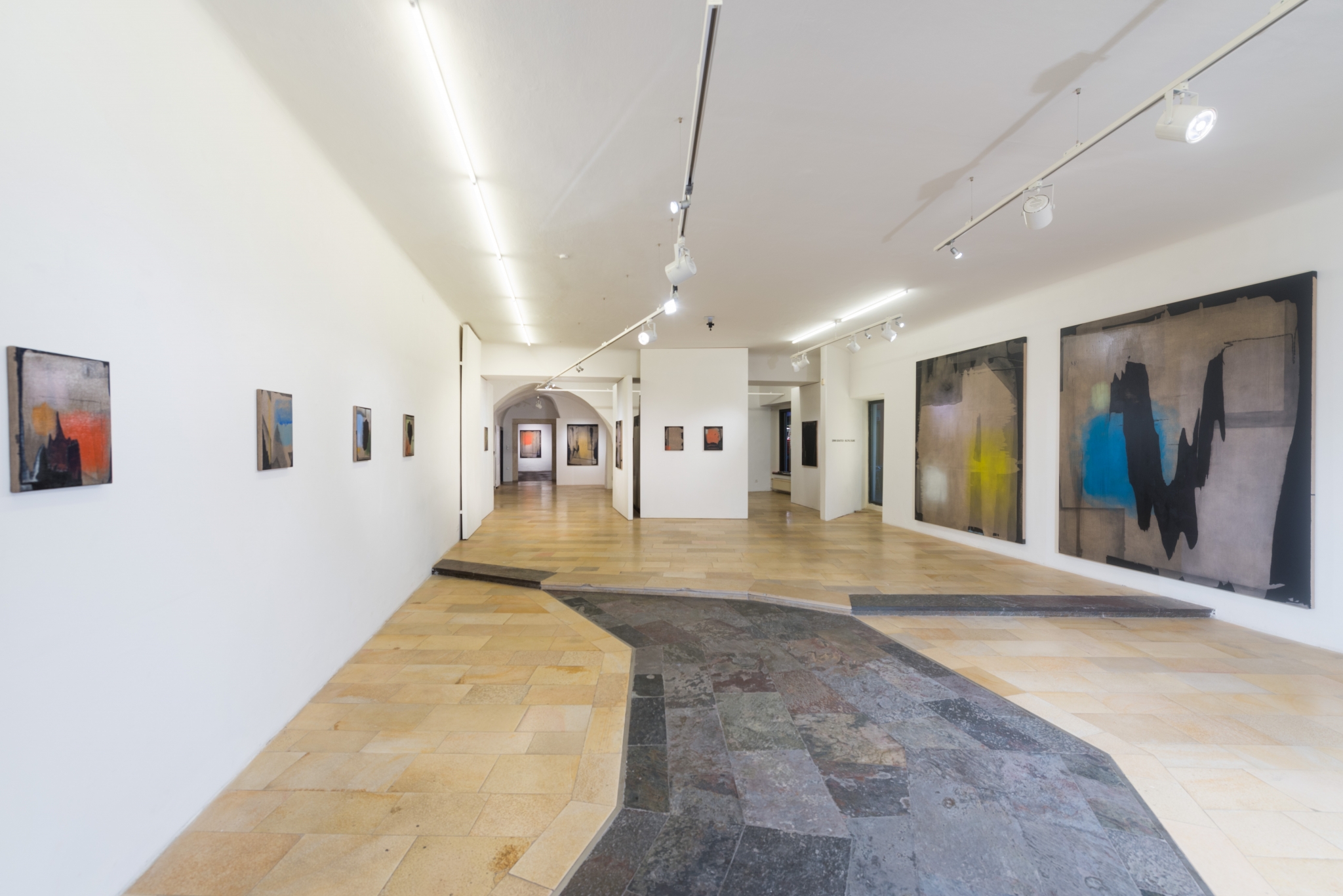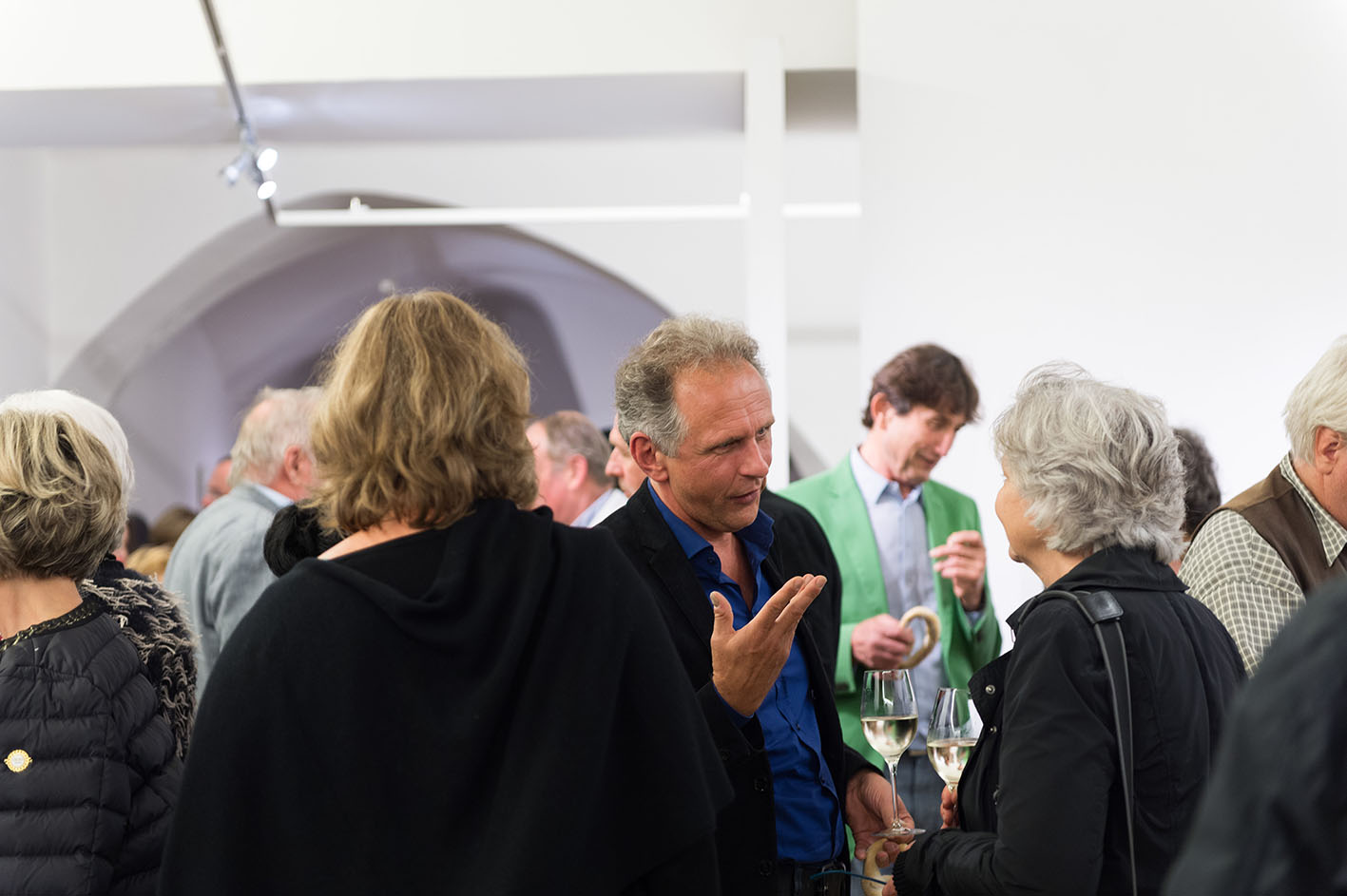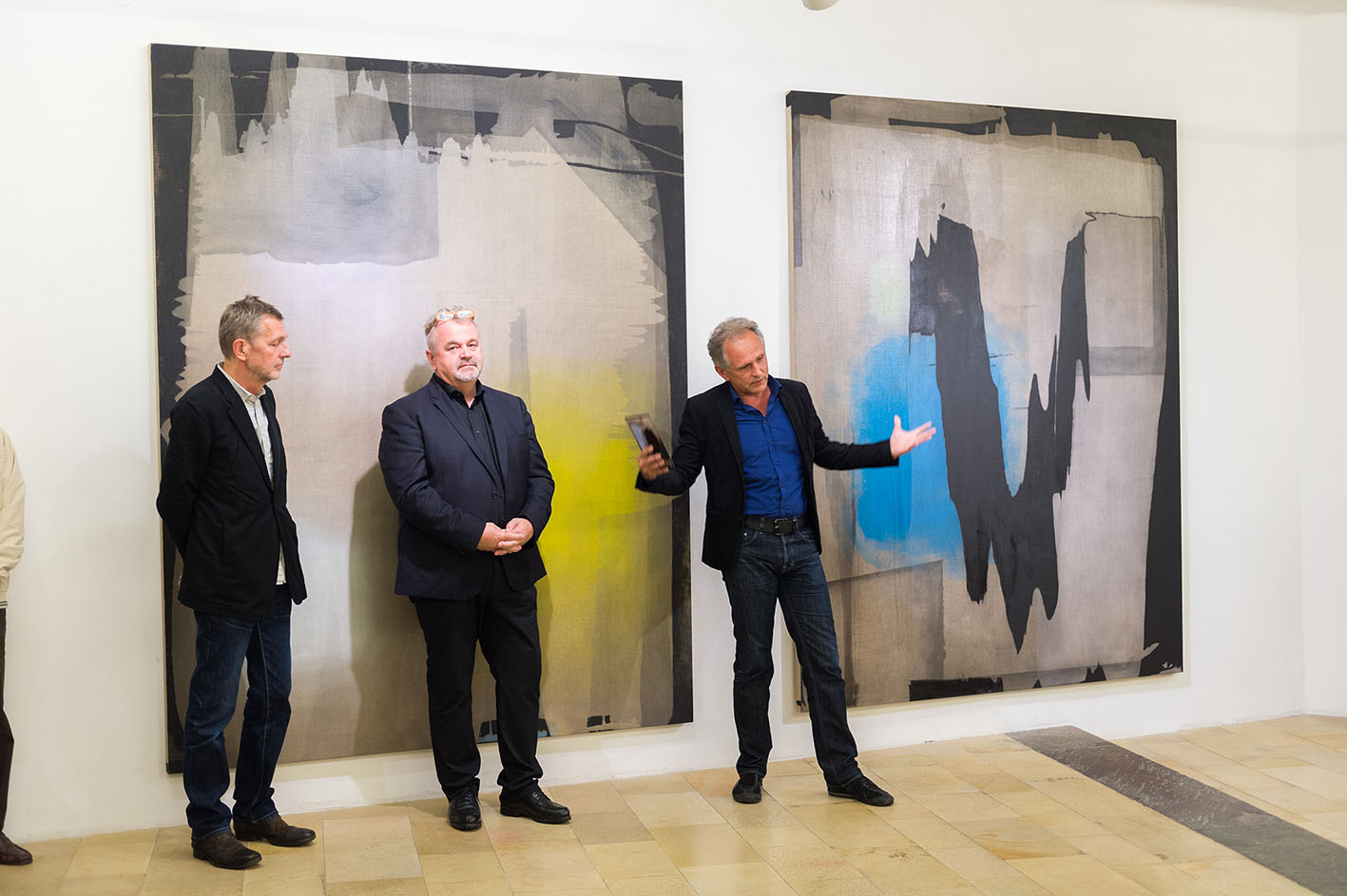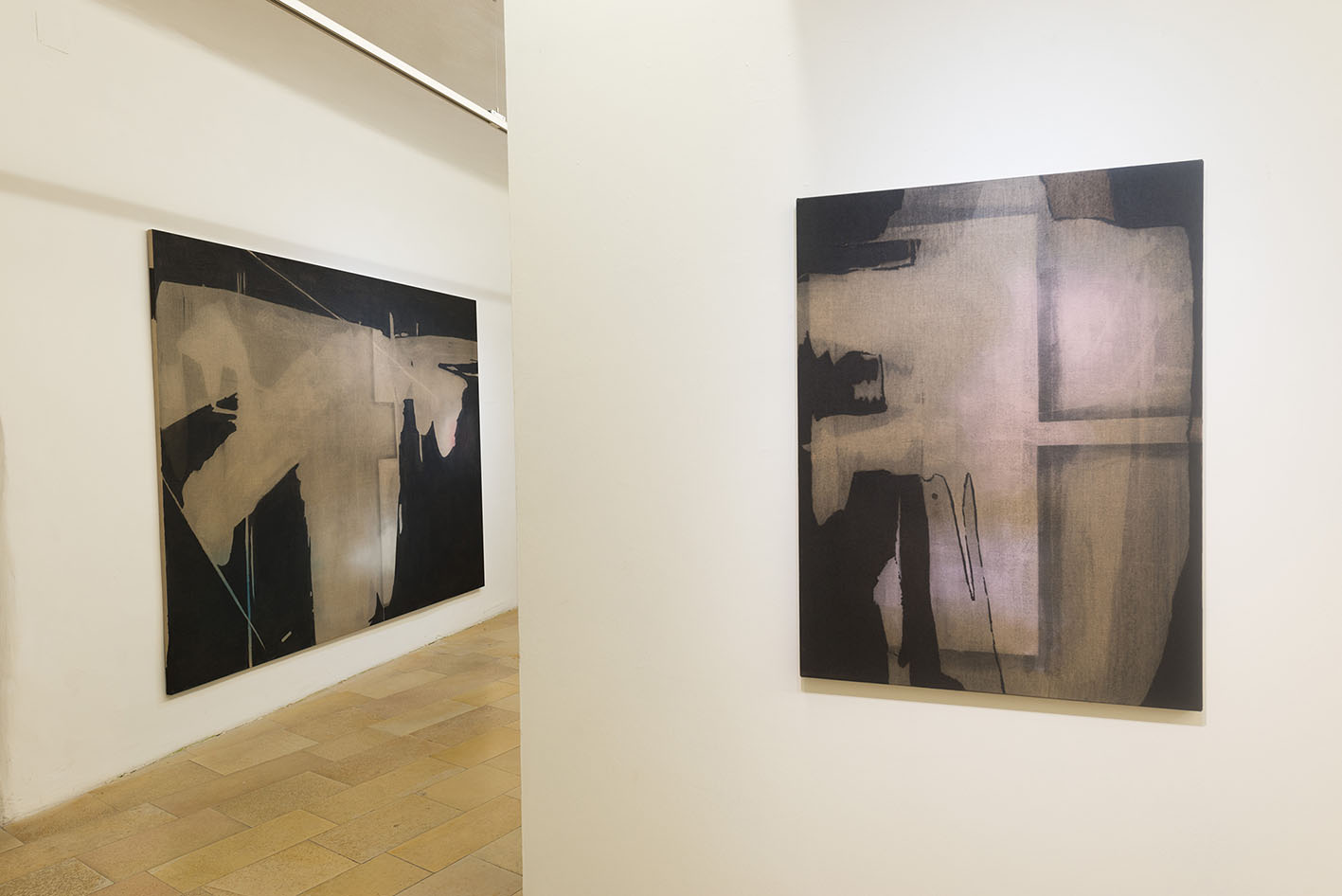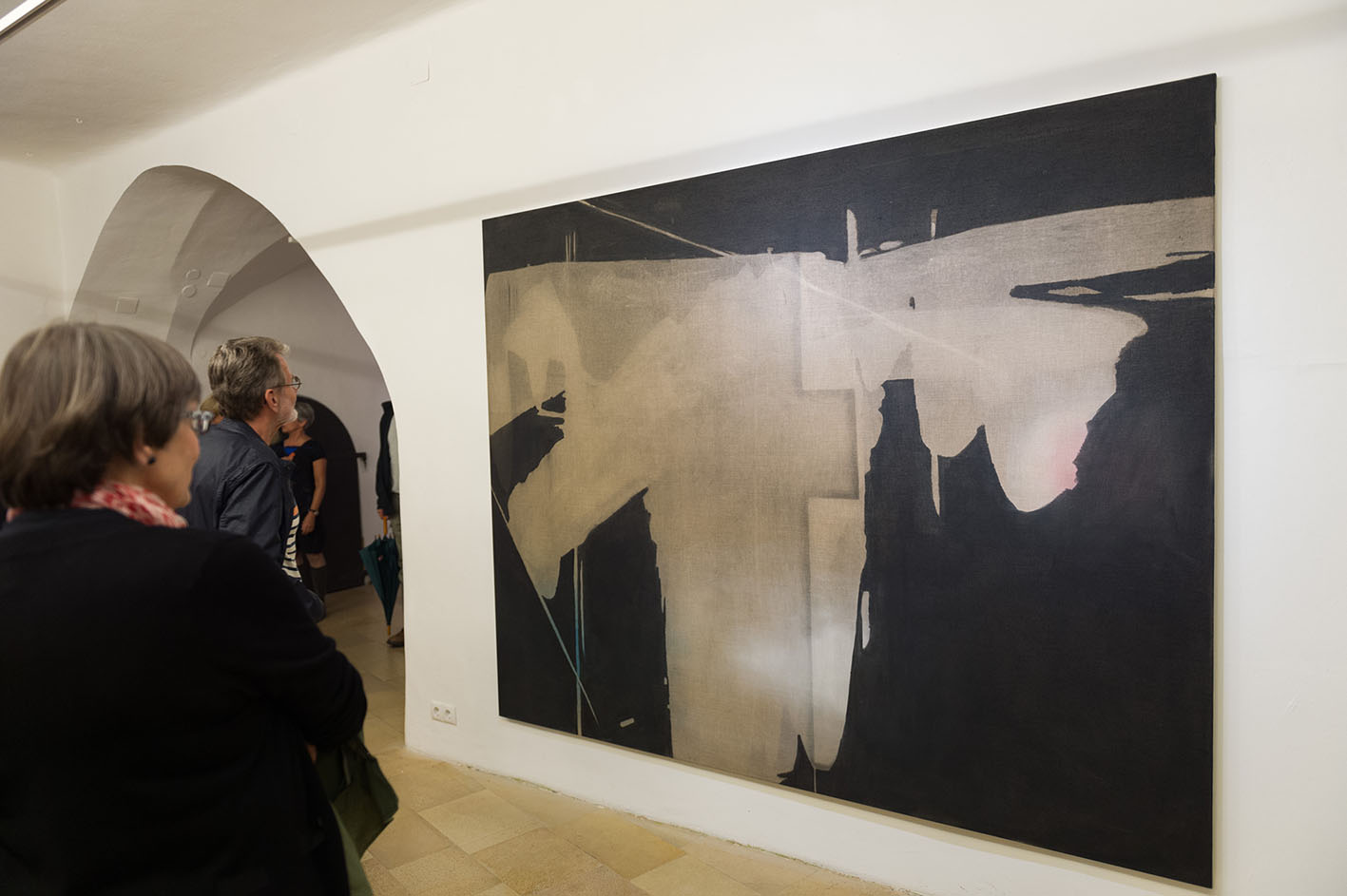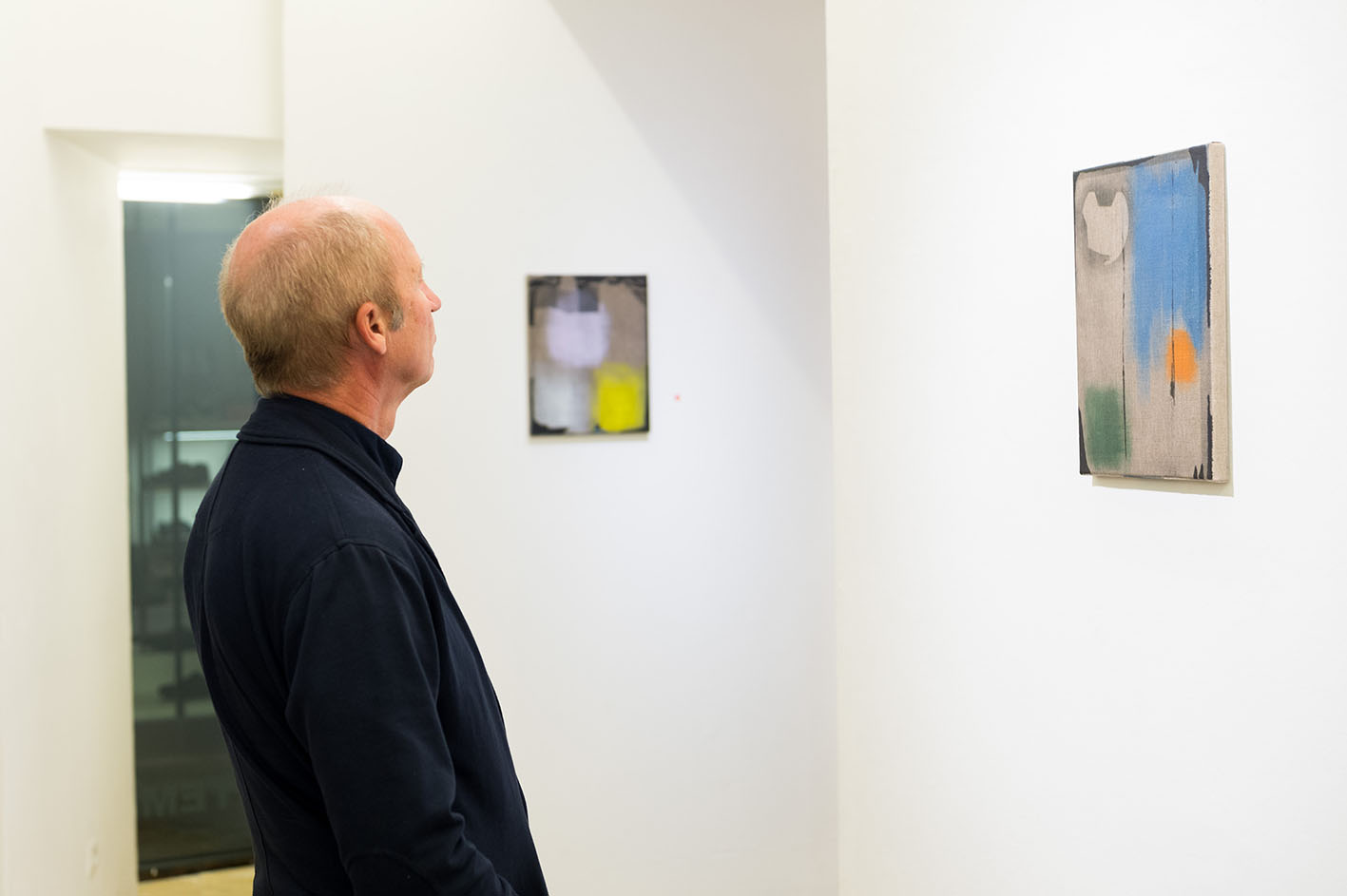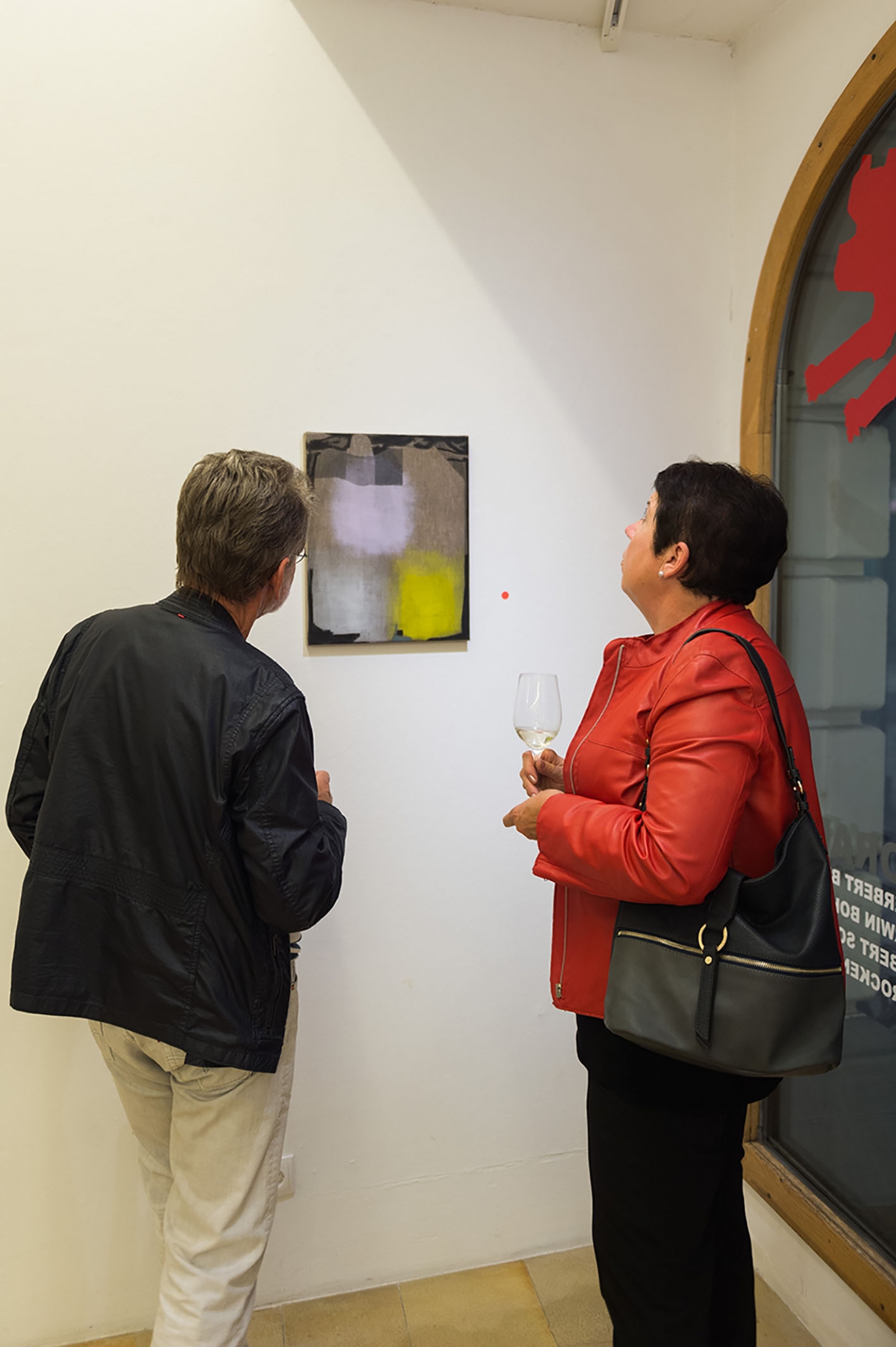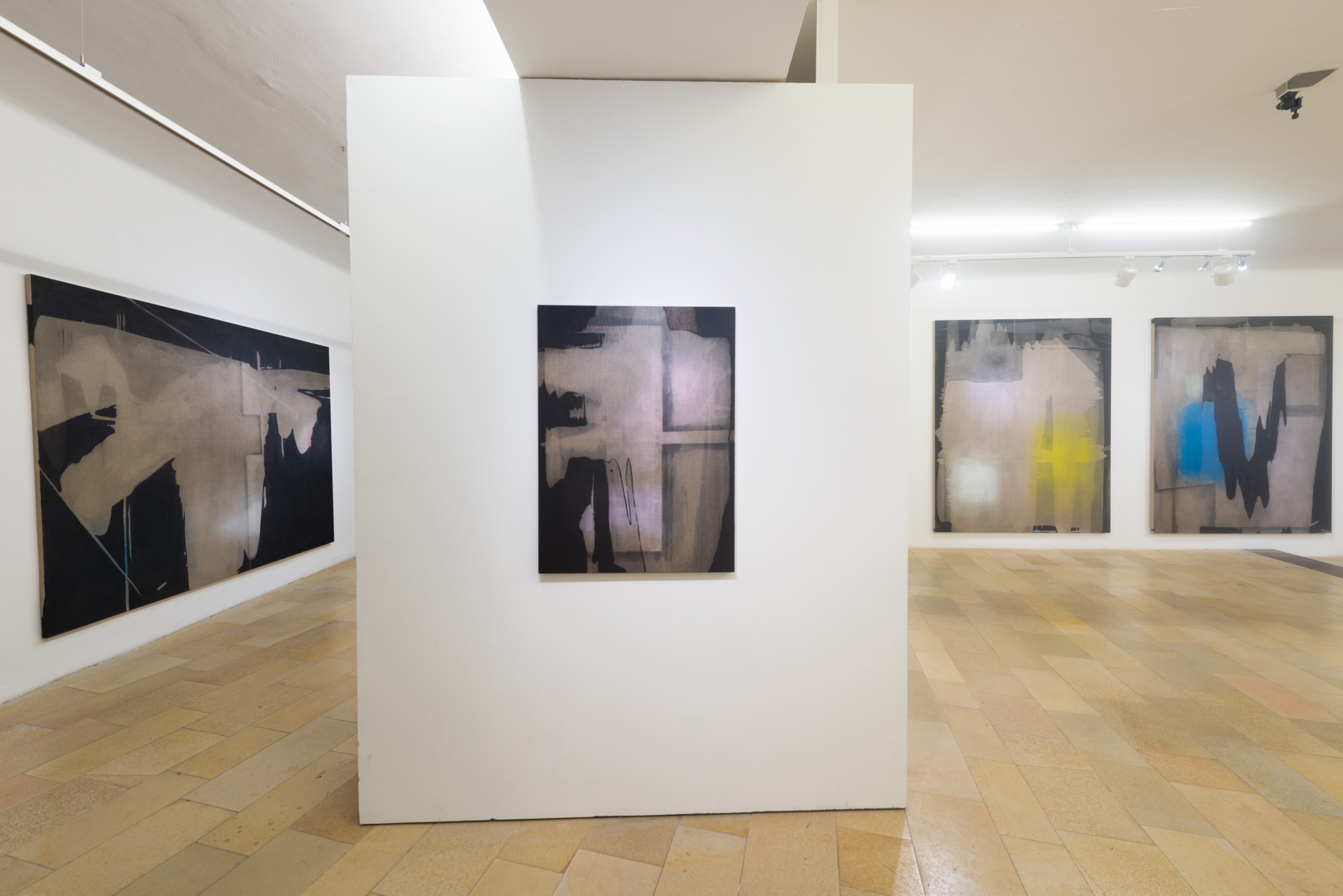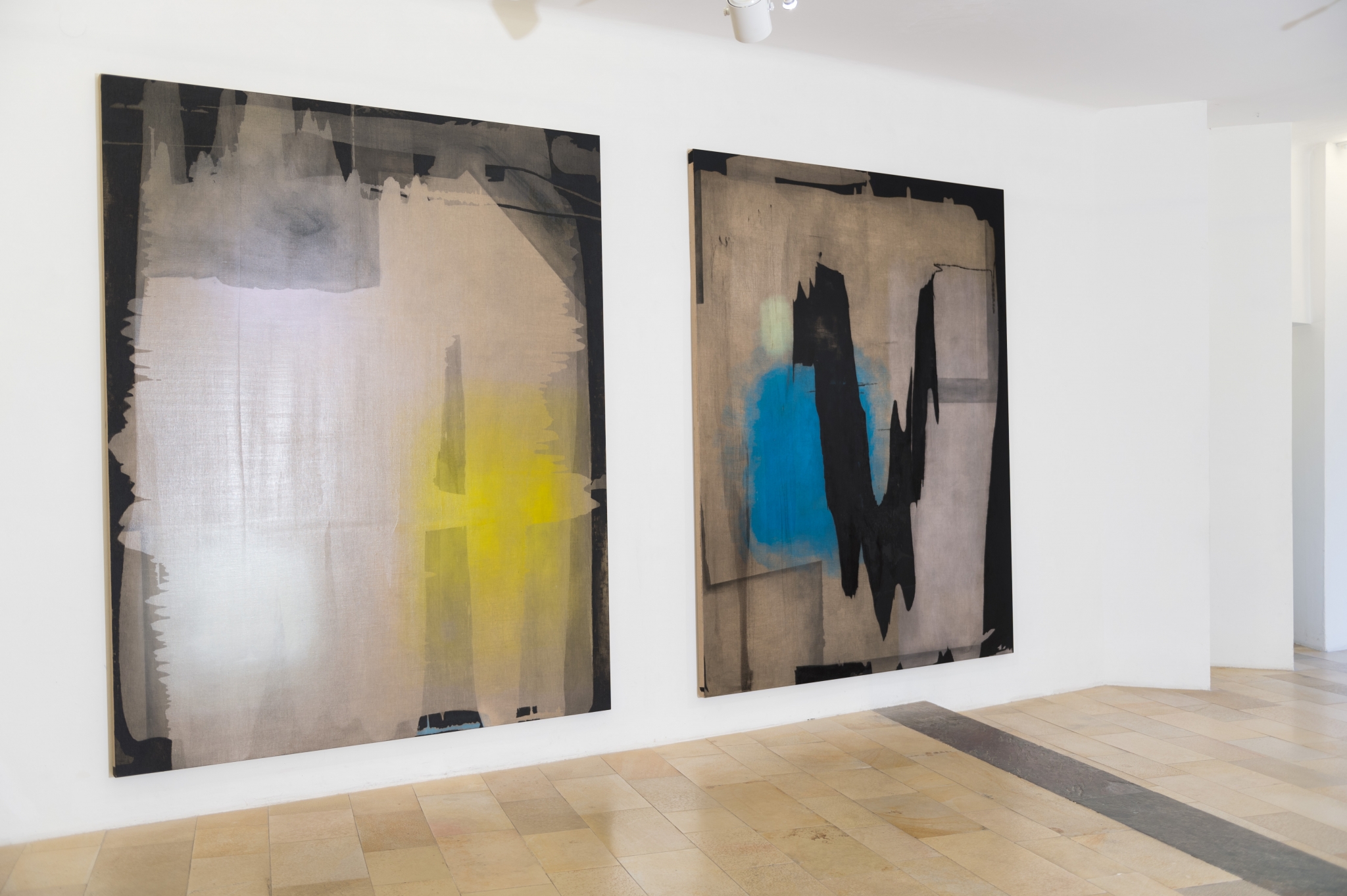16th of September – 16th of October 2014
Latest paintings by Erwin Bohatsch
The work of Erwin Bohatsch has always been determined by an analytical approach. With the postmodern simultaneity of artistic possibilities, new areas of inquiry opened up and began to question, among other things, the value of painting. Postmodernism placed the linear system of modernity, which ultimately formulated its central motivation as abstraction, under pressure. Suddenly, the rationality and possibilities of the medium of painting were being discussed in numerous ways. Umberto Eco speaks of a ‘new arrangement of given materials’, thus launching a new inquiry into familiar problems in painting. Categories such as ‘abstract’ or ‘representational’ become relativised against this background.
The free interplay of forms; the confrontation and interlacing of contradictory painterly realities; the use of cross-media and transgressive approaches; the integration of unconventional materials: to this day, these remain expressions of the painter’s self-conception. Already in the 1950s, artists sought to overcome the fictitious image space of conventional panel paintings in order to create a link to real spatial surroundings. Essentially, this has not changed, although the ways and means to achieve this have become much more diverse.
Until recently, Bohatsch’s paintings were marked by a certain grappling for the bare essentials of painting. The minimal colour (usually black), applied to a non-primed canvas, created the impression of a by-product or the preliminary. No recognisable representational references, no narrative legibility and no conscious process of aestheticisation – pure flatness. Image elements appeared to be randomly distributed on the canvas.
In Bohatsch’s latest paintings, the organisation of image elements – often determined by the materials used – conjures up the possibility of spatial perception. Suddenly, areas, spots and lines make up legible structures. Lines, areas and sparingly applied colour create the illusion of space – and, occasionally, assign room for the viewer within the space continuum of the painting.
The multiple spatial structures in Bohatsch’s new works unfurl before the viewer’s eye, only to immediately transform again. The transformation of forms reveals their inherent rationality. Spaces emerge and build themselves up in front of us with the logic of universal growth. The participatory role of the viewer completes the visual experience and underlines the openness of this painting practice. Ever since the invention of perspective, the illusion of space has been one of the central motivations of painting. Its relation to reality, however, has changed in a myriad ways. This has led to the development of a reality, which subjects painting to an own logic. Bohatsch’s multiple spatial structures, which oscillate between two- and three-dimensionality, speak of this image logic, which emerges from the painterly process. The simultaneity of various spatial structures within an image gives rise to an atmosphere which only exists as a memory of actual reality and challenges our imagination.
Günther Holler-Schuster
